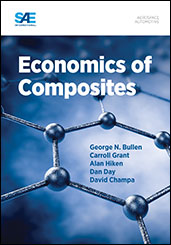Technical Paper
Implementation of Long Assembly Drills for 777X Flap Carriers
2024-03-05
2024-01-1923
Large diameter, tightly toleranced fastener patterns are commonplace in aerospace structures. Satisfactory generation of these holes is often challenging and can be further complicated by difficult or obstructed access. Bespoke tooling and drill jigs are typically used in conjunction with power feed units leading to a manual, inflexible, and expensive manufacturing process. For 777X flap production, Boeing and Electroimpact collaborated to create a novel, automated solution to generate the fastener holes for the main carrier fitting attachment pattern. Existing robotic automation used for skin to substructure assembly was modified to utilize extended length (up to 635mm), bearing-supported drill bar sub-assemblies. These Long Assembly Drills (LADs) had to be easily attached and detached by one operator, interface with the existing spindle(s), supply cutting lubricant, extract swarf on demand, and include a means for automatically locating datum features.


